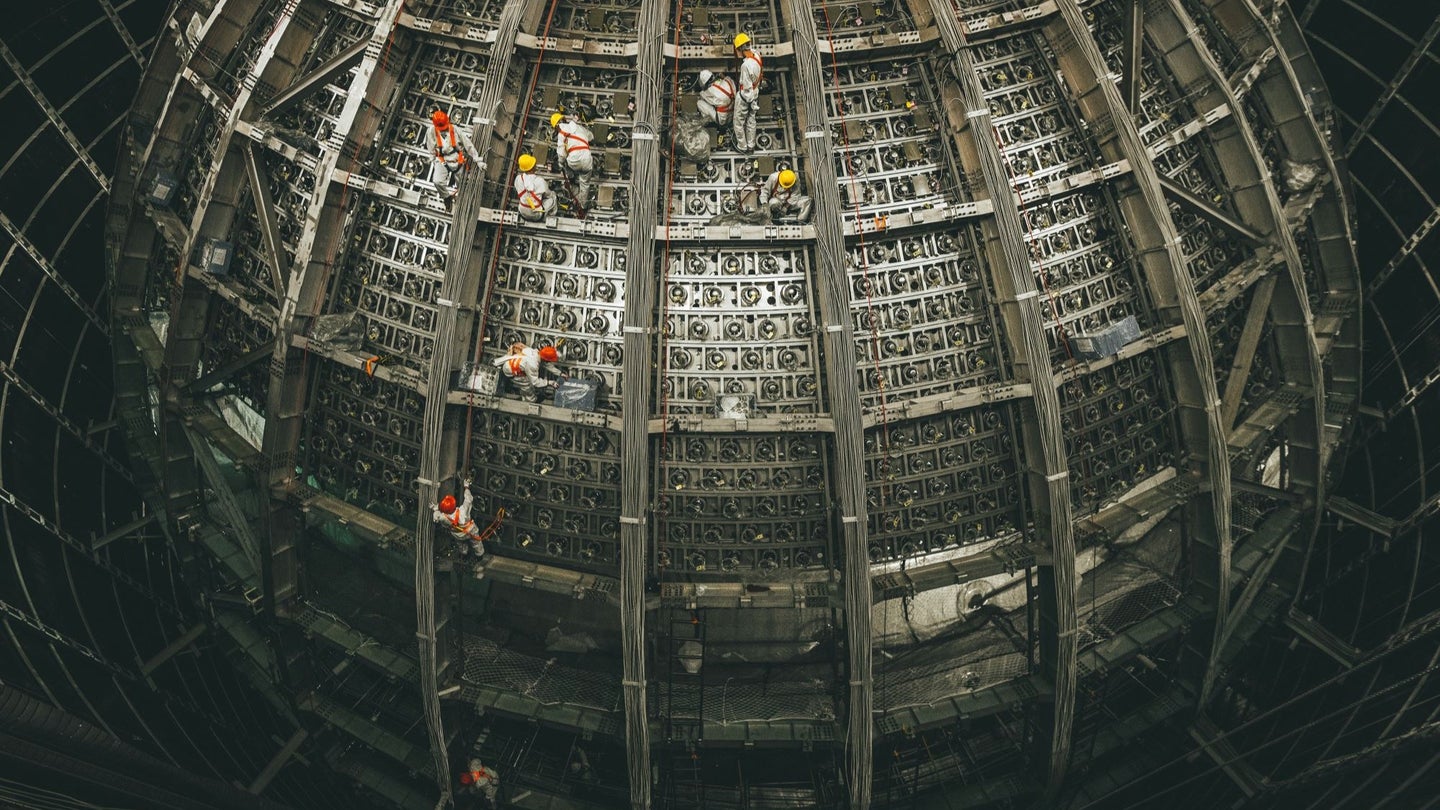A massive detector in China will try to find a supernova before it happens
Ghostly particles can give advance warning that a star is about to explode.

Trillions of particles from distant stars and galaxies are streaming through your body every second—you just can’t feel them. These ghost-like particles are called neutrinos. Although the universe spits them out constantly, these objects barely interact with matter—they can even slip through humanity’s toughest barriers, such as steel or lead walls.
Some neutrinos come from supernovae, the extravagant deaths of the biggest stars; they’re also produced by radioactive decay in Earth’s rocks, reactions in the sun, and even our planet’s aurorae. These hard-to-see particles are all over the place and crucial to multiple areas of science, but we’re still in need of better ways of finding them. Now, a new observatory under construction in China’s Guangdong province—the Jiangmen Underground Neutrino Observatory, or JUNO—plans to hunt these elusive particles with better sensitivity than ever before.
Like most neutrino detectors, it’s a huge vat filled with liquid for the neutrinos to interact with—the bigger the net, the more fish you’re likely to catch. “When it is completed, JUNO will be 20 times larger than the largest existing detector of the same type,” says Yufeng Li, a researcher and member of the JUNO collaboration at the Institute of High Energy Physics (IHEP) in Beijing. Currently under construction and expected to start operation in 2024, this detector will not only be bigger, but also more sensitive to slight variations in neutrinos’ energies than any of its predecessors. Li adds, it’s going to be “a unique and important observatory in the community.”
[Related: The Milky Way’s ghostly neutrinos have finally been found]
The observatory’s most ambitious goal is to preemptively spot neutrinos from stars that are dying but haven’t exploded yet. That way, telescopes can catch these stars in their final destructive act. “Neutrinos are expected to reach Earth hours earlier than photons because of their weakly-interacting nature,” explains Irene Tamborra, a physicist at the Niels Bohr Institute in Denmark not affiliated with the project.
Astronomers still don’t know the finer details of how a star explodes, but observing the supernova as it starts might help give some clues. “The early detection of neutrinos will be crucial to point the telescopes in the direction of the supernova and catch its electromagnetic emission early on,” adds Tamborra. JUNO should be able to alert astronomers hours to days before a star is slated to explode, giving them time to prep and point their telescopes. It might even be able to measure the faint background of neutrinos coming from distant supernovae, all across the galaxy, which is of great interest to cosmologists trying to put together a picture of the whole universe.
In addition to supernovae, the observatory will be searching for neutrinos from much closer to home: nuclear reactors. The nearby Yangjiang and Taishan nuclear power plants produce neutrinos, and physicists are hoping to get a taste of those neutrinos’ flavors with JUNO. Neutrinos come in three flavors (yes, they’re really called that!), known as the electron, tau, and muon neutrinos. They can flip between their different states in so-called oscillations. Scientists can calculate the number of neutrinos of each kind they expect from the power plant, and compare to what they actually observe with JUNO to better understand these flips.
[Related: This ghostly particle may be why dark matter keeps eluding us]
“It is also very likely that there will be surprise discoveries, as that often happens when powerful new experiments are deployed,” says Ohio State University astrophysicist John Beacom.
JUNO isn’t the only big observatory after neutrinos. The current largest liquid neutrino detector is Super-Kamiokande in Japan, and researchers there are planning a huge upgrade to make it the Hyper-Kamiokande. The United States is getting in the game too, currently using a detector at the Fermi National Accelerator Lab and planning its own multi-billion-dollar next-gen observatory, called the Deep Underground Neutrino Experiment. These projects are a few years away, though, so IHEP president Yifang Wang told Science that he gives JUNO “3-to-1 odds to get there first” to figure out some fundamental properties of neutrinos.
No matter who wins the race, this observatory is opening up one of our windows to the universe a bit wider. “JUNO is a huge step forward for neutrino physics and astrophysics,” Beacom says, “and I’m very excited to see what it will do.”